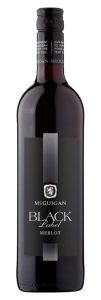Merlot is such a frequently encountered variety that it is often taken for granted.
So, I have decided to look at it in a bit more depth today.
Another potentially neglected area by wine-centred commentators is branded wines.
For sure, we do love those niche offerings lovingly prepared by the David’s of the wine production world.
But the Goliaths may also have a tale to tell.
After all, many people are drawn towards those big selling, and often reassuringly consistent, wines with familiar names.
So, this post unites those (normally unrelated) themes to find our MidWeek Wines Benchmark Branded Merlot.
Also featured is a suggestion on a whisky for Burns Night.
Once again, a picture and hyperlink is included to make it easier to track down the item in question.
First, then Merlot’s characteristics.
The variety is renowned for its versatility and crowd-pleasing potential which, taken together, make it one of the world’s most popular red wine grapes.
Those characteristics often materialise as gentle cherry flavours enhanced by spicy touches but, usually – in line with popular current preferences – relatively little tannin.
Typically, it wins friends with soft, easy-drinking, light, mild, and smooth red wine with appeal to a wide range of palates.
Denser, more complex versions, still exist but they are less common now and can be more costly to produce.
Merlots early rise and fall.
Historically, merlot first rose to prominence in Bordeaux – which should not surprise us since it has the same dad (cabernet franc) as cabernet sauvignon.
It became a major player there partly because its early ripening and suitability for cool, moisture retaining clay soils, make it an obvious complement to its “polar opposite” half-brother.
However, Bordeaux’s deep, black fruit based and savoury merlots no longer enjoy the demand they did.
Instead, other parts of the world started to become the “go-to” places for the variety.
Eastern Europe and Chile are two important beneficiaries but they are by no means alone.
Indeed, merlot can thrive in many places at the right latitude where cold, wet soils stop other varieties giving of their best.
In fact, many contend that overly dry soils actually reduce the quality of merlot.
What about branded versions of merlot?
Yes I did say that branded options would be today’s theme.
And it certainly makes sense to link an enormously popular wine, with huge availability, to the world’s biggest bottled wine suppliers.
After all, those operations have the benefit of focus-group driven marketing and deep pockets (allowing widespread advertising and attractive promotional discounts).
So many of them are well placed to provide inexpensive, dependable versions with good year-on-year consistency.
Consequently, I took a close look at eight of the biggest selling brands of merlot.
What did I find?
Well, first, I was surprised by the wide differences – but perhaps that is because each producer is targeting different sets of consumers.
Nevertheless, I did not expect to find such big variations about depth (or, in truth, lightness).
Possibly that lightness is being accentuated by the current (alcohol tax related) quest for smaller abv’s – the lower the alcohol, it seems, the less texture to the wine.
Equally, however, I did not expect big differences in ripeness (and, hence, sweetness),
Nor other versions with pronounced savoury elements that sometimes overshadowed the fruit.
So, I decided to select a tasty benchmark merlot that is especially effective at bringing together the variety’s best and most typical qualities.
That should help readers negotiate a path through what some might consider the “merlot jungle”.
That way, anyone often buying one particular branded merlot can then compare their normal purchase with the benchmark version.
Whichever suits their personal tastes better wins the day – and can be bought with confidence.
Equally, anyone looking for a typical, widely available, entry point merlot can use my benchmark choice as a start point.
Time now for that anticipatory drumroll.

2023 McGuigan Black Label Merlot (£7 at Asda but available in other retailers too, and 12.5% abv):
The heat of Australia does not always help merlot because rapid ripening often produces jammy versions.
Even worse, sunshine encourages vines into uncontrolled growth and, hence, the over-cropping that reduces concentration and intensity.
Here, though, the “South Eastern Australia” label suggests that McGuigans (invariably reliable producers) can trawl though numerous vineyards to catch grapes harvested at the right point.
What does the benchmark option taste like
Opening with aromas of black fruit, it goes on to provide soft cherry, loganberry and plum flavours.
Those elements are nicely bound into a medium bodied texture containing acidic verve, firm-ish tannin and touches of chocolate, baking spice, vanilla and gentle oakiness.
Closing thoughts.
Once you have selected your preferred merlot, do not hesitate to benchmark that against the particular retailers premium “own label” option (Finest, Best, Extra Special, Taste the Difference etc).
Often, they offer a useful upgrade that fully justifies any extra cost.
Incidentally, when benchmarking, have both bottles open at once, pour a glass of each and test them sip for sip.
Finishing one bottle before you open its rival does not work anything like as well.
Bonus for Burns Night.

Saturday is, of course, Burns Night so you may be looking for a good value whisky with which to toast the haggis.
Here is my suggestion …
Ben Bracken Highland Single Malt (£18.20 at Lidl):
To be fair, both Lidl and Aldi have a good range of well-priced and carefully sourced whiskies.
However, this Highland option is a personal favourite with its taste and smell of cappuccino coffee.
Its foundation is centred around soft, fudge, black pepper and caramel flavours accompanied by subtle marzipan sweetness that complements the spiciness of haggis well.
It’s a broader look at budget (but great value) fare in Monday’s Top Tip selections but next Thursday’s post builds on today’s ideas about benchmarking to consider tastings more generally.








